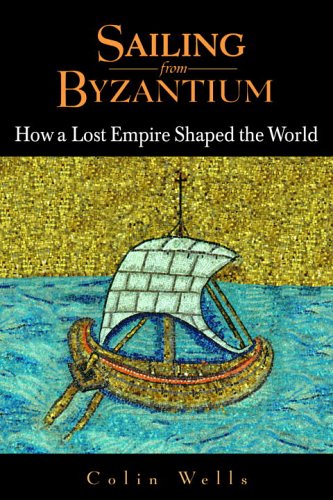Big Idea: For a long time historians have viewed the history of the Byzantine empire as little more than a millennium long uninspiring tail of decay. Certainly, if territorial expansion is the measure of success for empires than this assessment would have to be true. However Collin Wells makes the case that the cultural influence of this “forgotten empire” upon it’s three neighbours was and continues to be absolutely massive.
To the West: It was Byzantine humanists that taught the Italians to read and appreciate ancient Greek literature. The rediscovery of Greek thought that inspired the Renaissance happened because Byzantines monks carefully transported and meticulously copied these ancient greek texts for their Latin patrons. Without this investment the renaissance would never have happened
To the East: It was a Byzantine love for rational inquiry which led to the golden age of Islamic Science. As the Arabs conquered Byzantine lands they allowed themselves as illiterates to be taught by their captives. Eventually the Greek approach to gaining knowledge through rational inquiry was reacted against and completely squashed in the muslim world, laying the foundations for some of the more radical elements of Islamic thought that we see today.
To the North: The Byzantine empire managed to spread Christianity to Slavs, Bulgarians, and Russians creating a bond that transcended boarders and shaped the belief system of countless numbers of people.
Little bits of interesting:
- My way or the highway — The Byzantines were not very tolerant of variant versions of Christianity scattered around it’s empire. The persecution was so bad that when the Muslims came conquering in the 600’s, many un-orthodox Christians welcomed the invaders as liberators.
- Icon’s got to go! — For a long time Byzantine Christians were known for their Icons. Then a debate happened, all these images were actually idolatry it was said. God’s judgment would surely come. No! said the other side the icons are not worshiped as idols they are merely reminders of who we worship. Should they stay or should they go? War was where the decision would ultimately be made. Do we win or lose when we have the icons? They lost some battles, so it was time to burn and bury the icons. Eventually they came back but not for quite a while.
- The first bobble heads — In the 5th century, asceticism was all the rage and Simeon of Antioch was its rock star. His claim to fame was a 30 year run atop a 50 foot pole. He was so popular that people traveled all the way from Britain to just to catch a glimpse. Soon budding young entrepreneurs capitalized on the craze by creating and selling commemorative Simeon dolls!
- Rationalist inquisition — We’ve all heard about the Spanish Inquisition. Ultra religious people torturing people for not having enough faith. In the Muslim world in the 9th century almost the exact opposite kind of inquisition happened. It was an inquisition that tortured ultra religious people for not having enough reason! The leader, Al ma mun, was enamoured with the rationalist thought of the Greek Byzantines. Science, medicine, philosophy was the way forward for Islam. Muslim hardliners resisted this new openness to reason, so he rounded them up and tortured them until they accepted a more rationalistic doctrine. Significant people were martyred, and it became the rallying cry for a brand of Islam that would staunchly repudiate any kind of rationalism. This anti-reason version of Islam won and from its stream flows sharia law, the Wahhabi, and Osama Bin Ladin.
- I love my booze — Vladimir of Russia was tempted to convert to Islam in the 900’s he liked the part about how all carnal desires would be fulfilled in the after life. But he didn’t like the thought of giving up wine in this life “Russians cannot live without wine” he said and began shopping for other religions
- Sketchy conversion — God himself must live at the Haggia Sophia, said the Russians who investigated the possibility of becoming orthodox, but even the this dazzling architectural masterpiece in Constantinople wasn’t quite enough to make him and his Russian people convert. What did it was a war. The great Byzantine city was in trouble and needed soldiers. They offered a royal princess’s to Vladimir in marriage if he would fight for them on the condition that he would convert. He did, and Christianity came to Russia thanks to war, politics, and violence.
- Fresh Harvest – The Slav’s were the harvest field. Roman Christianity wanted to win them over and so did the Orthodox. They even got in fights over this. The Orthodox won. How? They decided that the Slav’s should hear the gospel in their own language. They helped them write their own language and then translated their liturgies into it. This horrified the Roman church who were certain that the language of the church must remain in latin. They stuck to their guns, and lost the Slavs to the Orthodox.




